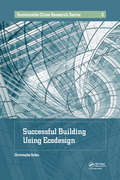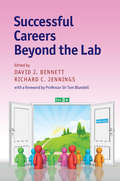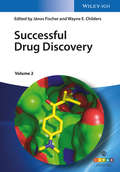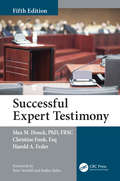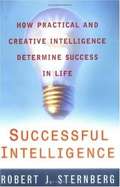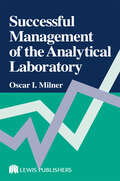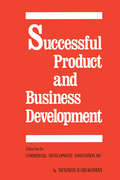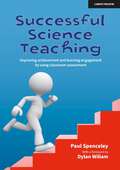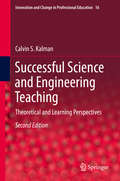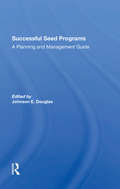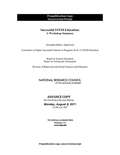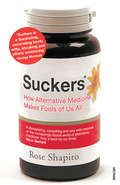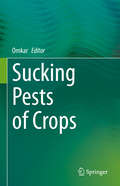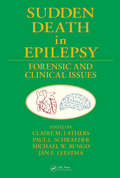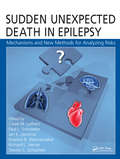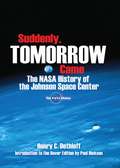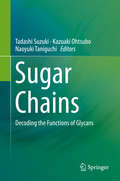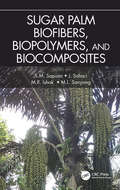- Table View
- List View
Successful Agricultural Innovation in Emerging Economies
by Richard C. Jennings David J. BennettWorld population is forecast to grow from 7 to 9 billion by 2050, 1 in 6 is already hungry and food production must increase by 70-100% if it is to feed this growing population. No single solution will solve this problem but recent developments in the genetic technologies of plant breeding can help to increase agricultural efficiencies and save people from hunger in a sustainable manner, particularly in African nations where the need is greatest. These advances can rapidly incorporate new traits and tailor existing crops to meet new requirements and also greatly reduce the time and costs taken to improve local crop varieties. This book provides a collected, reliable, succinct review which deals expressly with the successful implementation of the new plant genetic sciences in emerging economies in the context of the interrelated key regulatory, social, ethical, political and trade matters.
Successful Berry Growing: How to Plant, Prune, Pick and Preserve Bush and Vine Fruits
by Gene LogsdonA garden without berries is like spring without flowers. But with ever-increasing prices at grocery stores and markets, berries have sadly become a rare treat for most people. Successful Berry Growing is a book to solve this problem for good! A lifelong organic farmer, homesteader and student of everything agricultural, Gene Logsdon knows a thing or two about growing berries. And although Successful Berry Growing is geared to the small-scale or family operation, the information inside is useful for growing berries on any scale. You'll learn how to: Optimize your soil for berry growing Choose the right berry varieties for your climate Properly plant and prune your berry plants Keep your plants healthy and disease-free With detailed information on cultivating strawberries, raspberries, blueberries, blackberries, grapes, currants, gooseberries, cranberries, elderberries, huckleberries and more, Successful Berry Growing is all you need to grow nature's most delicious candy in your own backyard!
Successful Building Using Ecodesign (Sustainable Cities Research Series #1)
by Christophe GobinThe notion of ecodesign has now clearly become part of the building sector. It involves taking into consideration environmental issues that are indispensible in constructing our living environment. However, this method, which is industrial in origin, clearly shows that buildings are not the result of simply adding up technical rules. A much more demanding process underpins their development, one that engages all stakeholders in the industry and leads them towards using a new practice involving multi-criteria choices that are never unique. The object of this work is to review each of the stages in a building operation to illustrate the necessity of optimization and to observe the useful contribution that ecodesign and its tools can make. Ecodesign has been tackled from the professional point of view of those involved in construction work. In this perspective, the central tool is clearly that of the life cycle analysis (LCA). This book therefore describes the different steps of a project management cycle in accordance with a functional analysis. The product achievement is evaluated with the life cycle analysis which can be used as a measurement of its efficiency.
Successful Careers beyond the Lab
by Richard C. David J. Bennett JenningsThere is a major demand for people with scientific training in a wide range of professions based on and maintaining relations with science. However, there is a lack of good first-hand information about alternative career paths to research. From entrepreneurship, industry and the media to government, public relations, activism and teaching, this is a readable guide to science based skills, lifestyles and career paths. The ever-narrowing pyramid of opportunities within an academic career structure, or the prospect of a life in the laboratory losing its attraction, mean that many who trained in science and engineering now look for alternative careers. Thirty role models who began by studying many different disciplines give personal guidance for graduates, postgraduates and early-career scientists in the life sciences, physical sciences and engineering. This book is an entertaining resource for ideas about, and directions into, the many fields which they may not be aware of or may not have considered.
Successful Dog Adoption
by Sue SternbergFrom the Book jacket: EXPERT GUIDANCE IN CHOOSING THE RIGHT DOG -THE FIRST TIME Written by a renowned expert in shelter adoption, Successful Dog Adoption delivers all the information you need to find the perfect dog at a shelter and make him part of your family. In easy-to understand language, Sue Sternberg helps you decide if you're ready to adopt by evaluating your reasons and translating them into what you should look for in a particular dog. She shows you how to find a reputable shelter, prepare for the adoption process, and work with shelter personnel to make sure they have appropriately screened their dogs. You'll also learn about "rescue" dog and why one might be right for you. This practical guide covers all the vital issues you need to consider when adopting-choosing a male or female, a puppy or an adult; identifying fearful dogs or dogs who will bite; and seeking out a dog with the ideal temperament. Featured here are detailed tests and observations used by professionals to ascertain the temperament and compatibility of shelter dogs-now made available to the public for the first time. You'll discover how to determine risk factors in an unknown dog, gauge a dog's potential reaction to guests and strangers, and predict the compatibility level when you add another dog to your household. This book also offers invaluable advice on training your new pet, including guidance in housebreaking, selecting a training class, and helping a dog who gets carsick or doesn't like to be home alone. And, if you still experience difficulties with your dog, Sternberg gently discusses the step you can take. Authoritative and friendly, Successful Dog Adoption is the one-stop guide for finding your own "superdog"-and keeping the dog-owner relationship fresh and rewarding for years to come. SUE STERNBERG is one of the foremost authorities on successful shelter adoption in the United States, with more than 23 years of canine behavior experience. She is the Executiv Director of the Community Animal Shelter Association (CASA), a not-for-profit organization dedicated to pet owner outreach, safe animal adoptions, and quality-of-life issues at animal shelters around the world. Her extraordinary work with dogs is the subject of a Winter 2000 HBO documentary, Shelter Dogs.
Successful Drug Discovery
by Wayne E. Childers János FischerRetaining the successful approach found in the previous volume in this series, the inventors and primary developers of drugs that successfully made it to market tell the story of the drug's discovery and development and relate the often twisted route from the first candidate molecule to the final marketed drug. 11 selected case studies describe recently introduced drugs that have not been previously covered in textbooks or general references. These range across six different therapeutic fields and provide a representative cross-section of the current drug development efforts. Backed by copious data and chemical information, the insight and experience of the contributors makes this one of the most useful training manuals that a junior medicinal chemist can hope to find and has won the support and endorsement of IUPAC.
Successful Expert Testimony
by Max M. Houck Christine Funk Harold FederA major revision of the landmark book on expert testimony Feder’s Succeeding as an Expert Witness, Successful Expert Testimony, Fifth Edition highlights the book’s value to both attorneys and expert witnesses in promoting effective, impactful courtroom testimony. The book outlines the role of expert testimony in a trial, including explanations of methods, testing, and science, the legal process, and an overview of the roles of each player. Succeeding as an expert witness requires a basic understanding of who and what experts are and what role they play in rendering their opinions within the courts. The new edition has been fully updated to present key information on the most vital topics, including the deposition, a discussion of false or unsupported testimony, adherence to scientific principles, and direct and cross-examination testimony of expert witnesses. Each chapter includes key terms, review questions, and thought-provoking discussion questions for further consideration of the topics addressed. Given many high profile cases and increasing incidents of misconduct, this edition focuses heavily on the role of ethics in expert testimony and forensic practice. The full revised chapter on ethics, covers unethical conduct of forensic witnesses, admissibility of expert testimony, inter-professional relations, abuse of and by experts, and forensic professional codes of ethics. Offering useful career insights and established trial-tested tips, forensic scientist Max M. Houck and attorney Christine Funk update renowned lawyer Harold A. Feder’s classic book. Successful Expert Testimony, Fifth Edition serves as an ideal reference for forensic science students entering the work force—in labs and investigative positions—in addition to serving as a crucial resource for more experienced civil, private, and testifying experts in all disciplines.
Successful Grant Proposals in Science, Technology, and Medicine
by Sandra Oster Paul CordoThere are many resources on grant writing in science, technology and medicine, but most do not provide the practical advice needed to write the narratives of grant proposals. Designed to help novice and experienced investigators write compelling narratives and acquire research funding, this is a detailed guide to the content, organisation, layout, phrasing, and scientific argumentation of narratives. The authors draw on more than twenty years of research and analysis of grant proposals, having worked extensively with investigators at different levels, from pre-doctoral students to senior scientists. They have used this experience to design a framework for scientific writing that you can apply directly to narratives. The guidelines and advice offered are applicable across many funding agencies, including the NIH and NSF. Featuring many real-life examples, the book covers a range of topics, from organisational alternatives to best practices in grammar and editing, overview visuals, and working with contributors.
Successful Intelligence: How Practical and Creative Intelligence Determines Success in Life
by Robert SternbergIn response to the current buzz surrounding such books as "Emotional Intelligence" and "The Bell Curve," Yale University professor Robert Sternberg challenges the age-long debate over nature vs. nurture. Proposing that nurture is far more important than nature in determining success in life, he challenges this critical debate about how to best evaluate and teach America's youth. Sternberg argues that traditional IQ tests and standardized tests measure only 'inert' intelligence, and are therefore poor predictors of how students will do in life. SATs and other standardized tests only evaluate our ability to memorize material and perpetuate the labeling of students based on often irrelevant criteria. "Successful Intelligence" offers specific ways to develop practical and creative intelligence, it demonstrates how accomplished people make successful intelligence work for them, it shows how members of various ethnic groups who typically do not do as well on tests of academic intelligence can compete successfully on creative and practical intelligence and it tells readers that the willingness to take risks and overcome obstacles is a key attribute for achieving intelligence. Sternberg provides us with a new definition of intelligence that predicts how students will fare in problem-solving in both their personal and professional lives. With the keys on how to achieve life's more important goals, Successful Intelligence will change the way we regard aptitude and intelligence.
Successful Management of the Analytical Laboratory
by Oscar I. MilnerSuccessful Management of the Analytical Laboratory provides a comprehensive discussion of the problems that face analytical laboratory managers and presents proven techniques for improving the operation and performance of analytical labs. A wide range of topics are covered, including functions of various laboratory types (including a discussion of
Successful Product and Business Development, First Edition
by N. GiragosianThis book shows how the people carrying out industrial commercial development perform the vital functions and deals with the organization and structure of commercial development. It describes the change in thinking of chemical companies from a product-oriented outlook to a business-oriented one.
Successful Science Teaching: Improving achievement and learning engagement by using classroom assessment
by Paul SpenceleyTeachers simply do not have the time to do any more work. Yet the pressure to improve results is ever-upwards. The emphasis in this book is not on doing anything extra, but on doing all the everyday things that science teachers do – planning lessons, marking work and exams, providing feedback, and getting students involved in discussions, or self and peer-assessment – in a slightly different way. The book is full of simple, practical, formative assessment techniques and strategies, based on real classroom practices, repeated across the range of ages and abilities at secondary levels, in a variety of schools, that have been repeatedly shown to significantly improve examination results, and student involvement in lessons. Whether you are just about to embark on a career as a science teacher, or you have been one for many years, there is bound to be something here.
Successful Science Teaching: Improving achievement and learning engagement by using classroom assessment
by Paul SpenceleyTeachers simply do not have the time to do any more work. Yet the pressure to improve results is ever-upwards. The emphasis in this book is not on doing anything extra, but on doing all the everyday things that science teachers do – planning lessons, marking work and exams, providing feedback, and getting students involved in discussions, or self and peer-assessment – in a slightly different way. The book is full of simple, practical, formative assessment techniques and strategies, based on real classroom practices, repeated across the range of ages and abilities at secondary levels, in a variety of schools, that have been repeatedly shown to significantly improve examination results, and student involvement in lessons. Whether you are just about to embark on a career as a science teacher, or you have been one for many years, there is bound to be something here.
Successful Science and Engineering Teaching
by Calvin S. KalmanThe intent of this book is to describe how a professor can provide a learning environment that assists students to come to grips with the nature of science and engineering, to understand science and engineering concepts, and to solve problems in science and engineering courses. As such, this book is intended to be useful for any science or engineering professor, who wants to change their course to include more effective teaching methods, to instructors at post-secondary institutions, who are beginning their careers, and as a handbook for TA s. Since the book is based upon articles that I have had published in Science Educational Research and which are grounded in educational research that I have performed (both quantitative and qualitative) over many years, it will also be of interest to anyone engaged in research into teaching science and engineering at the post-secondary level. I have also tried to include enough background so that the book could be used as a textbook for a course in educational practice in science and engineering. The book has two main axes of development. Firstly, how do we get students to change their epistemology so that their outlook on the course material is not that it consists of a tool kit of assorted practices, classified according to problem type, but rather that the subject comprises a connected structure of concepts. Secondly, helping students to have a deeper understanding of science and engineering. "
Successful Seed Programs: A Planning And Management Guide
by Johnson E. DouglasThis book provides the administrator with a basic reference for assessing the stage of development of the seed program, identifying needs, developing plans, and taking actions necessary to build a successful seed program to help managers and leaders to plan and implement successful activities.
Successful Stem Education
by The National Academy of SciencesWhat students learn about the science disciplines, technology, engineering, and mathematics during their K-12 schooling shapes their intellectual development, opportunities for future study and work, and choices of career, as well as their capacity to make informed decisions about political and civic issues and about their own lives. Most people share the vision that a highly capable STEM workforce and a population that understands and supports the scientific enterprise are key to the future place of the United States in global economics and politics and to the well-being of the nation. Indeed, the solutions to some of the most daunting problems facing the nation will require not only the expertise of top STEM professionals but also the wisdom and understanding of its citizens. Although much is known about why schools may not succeed, it is far less clear what makes STEM education effective. Successful STEM Education: A Workshop Summary discusses the importance of STEM education. The report describes the primary types of K-12 schools and programs that can support successful education in the STEM disciplines and examines data and research that demonstrate the effectiveness of these school types. It also summarizes research that helps to identify both the elements that make such programs effective and what is needed to implement these elements.
Suckers: How Alternative Medicine Makes Fools of Us All
by Rose Shapiro'Alternative' medicine is now used by one in three of us. In the UK we spend an estimated £4.5 billion a year on it and its practitioners are now insinuating themselves into the mainstream. There are methods based on ancient or far-eastern medicine, as well as ones invented in the nineteenth and twentieth centuries. Many are promoted as natural treatments. What they have in common is that there is no hard evidence that any of them work. Treatments like homeopathy, acupuncture and chiropractic are widely available and considered reputable by many. Ever more bizarre therapies, from naturopathy to nutraceuticals, ear candling to ergogenics, are increasingly favoured. Endorsed by celebrities and embraced by the middle classes, alternative medicine's appeal is based on the spurious rediscovery of ancient wisdom and the supposedly benign quality of nature. Surrounded by an aura of unquestioning respect and promoted through uncritical airtime and column inches, alternative medicine has become a lifestyle choice. Its global market is predicted to be worth $5 trillion by 2050.Suckers reveals how alternative medicine can jeopardise the health of those it claims to treat, leaches resources from treatments of proven efficacy and is largely unaccountable and unregulated. In short, it is an industry that preys on human vulnerability and makes fools of us all. Suckers is a calling to account of a social and intellectual fraud; a bracing, funny and popular take on a global delusion.
Sucking Pests of Crops
by OmkarSucking pests are most notorious group of pests for agricultural crops. Unlike most pests with chewing mouth parts, sucking pests cause more severe damage to the crops and are complex to get identified until advanced stages of infection. Not only is this late detection detrimental to their effective control, sucking pests also often cause fungal growth and virus transmission. The book emphasizes on sucking pests of most major crops of India. It aims to reflect Indian scenario before the international readership. This book complies comprehensive information on sucking pests of crops and brings the attention of the readers to this multiple damage causing insect complex. The chapters are contributed by highly experienced Indigenous experts from Universities & ICAR institutes, and book collates useful content for students and young researchers in plant pathology, entomology and agriculture.
Sudden Death in Epilepsy: Forensic and Clinical Issues
by Jan E. Leestma Claire M. Lathers Paul L. Schraeder Michael W. BungoThough it is one of the most common causes of death in epilepsy patients, SUDEP is still infrequently and even reluctantly named on autopsy reports. This under-reporting equates to a lack of attention and earnest investigation into the cause, predisposition, and prevention of SUDEP. There is as yet little effort to establish an actionable strategy
Sudden Unexpected Death in Epilepsy: Mechanisms and New Methods for Analyzing Risks
by Steven C. Schachter Jan E. Leestma Claire M. Lathers Paul L. Schraeder Braxton B. Wannamaker Richard L. VerrierSudden Unexpected Death in Epilepsy: Mechanisms and New Methods for Analyzing Risks builds on earlier works focusing on the clinical problem of sudden unexpected death in epilepsy (SUDEP). This book presents a methodology for identifying and classifying clusters of risks that lead to SUDEP. Developed over the last two years, the SUDEP Classificatio
Suddenly, Tomorrow Came: The NASA History of the Johnson Space Center (Dover Books on Astronomy)
by Paul Dickson Henry C. DethloffAs the astronauts' home base and the site of Mission Control, the Johnson Space Center has witnessed some of the most triumphant moments in American history. Spanning initiatives from the 1960s to 1993, this illustrated volume traces the center's history, starting with its origins at the beginning of the space race in the late 1950s. Thrilling, authoritative accounts explain the development and achievements of the early space voyages; the lunar landing; the Mercury, Gemini, and Apollo programs; and the space shuttles and international space station. As astronaut Donald K. Slayton notes in his Foreword, this chronicle emphasizes the cooperation of "humans on space and on the ground. It realistically balances the role of the highly visible astronaut with the mammoth supporting team." An official NASA publication, Suddenly, Tomorrow Came is profusely illustrated with forty-four figures and tables, plus sixty-three photographs. Historian Paul Dickson brings the narrative up to date with an informative new Introduction.
Sugar Chains
by Tadashi Suzuki Kazuaki Ohtsubo Naoyuki TaniguchiThis book presents the latest breakthrough results in glycobiology regarding the roles of glycans in relation to quality control and transport of protein, the immune system, viral infection, stem cells, the neural system, and various diseases such as cancer, diabetes, chronic obstructive pulmonary disease, muscular dystrophy, and schizophrenia. Although glycoscience has long been regarded as a very specialized field with no simple analytical method, the recent explosive progress in research continues to provide limitless evidence that glycan chains are the key component in various biological phenomena. Cell surface glycans, for example, change with developmental stages or environmental conditions and thus represent a "face" of the cell that is utilized for identification of iPS and ES cells and as biomarkers in diagnosis or detection of cancer. This book comprises 17 chapters, each of which poses outstanding "glyco-related" questions enabling non-specialists to have a clearer idea about what the future direction for further investigation of glycans in their own research fields will be. Also including basic information to understand the nature of glycans, this title serves as an excellent "textbook" for researchers in diverse research fields who are not familiar with, but nevertheless interested in, glycan chains or sugar chains.
Sugar Palm Biofibers, Biopolymers, and Biocomposites
by S. M. Sapuan J. Sahari M. R. Ishak M. L. SanyangNatural fibre composites are increasingly being viewed as viable and environmentally responsible alternatives to synthetic fibre composites and plastics. Sugar Palm Biofibers, Biopolymers, and Biocomposites considers the use of sugar palm fibres for materials development and application. It offers original research on the properties and behavior of sugar palm’s fibres, polymers, and biocomposites, covering mechanical, physical, thermal, chemical, environmental, morphological properties, as well as optimal design. It discusses sugar palm fibre thermosetting composites, sugar palm fibre thermoplastic composites, impregnation of sugar palm fibre, various lengths of sugar palm fibres, forms and arrangements such as particulate, continuous roving, and woven fabrics. The book also discusses innovations in commercialized products derived from sugar palm.
Sugar Rush Racers: The Sweet Outdoors (Sugar Rush Racers)
by Shari SimpsonThe Sugar Rush Racers from WRECK-IT RALPH are catapulted out of their arcade game and into the world of a young girl named Molly, in this chapter book series.Molly can't wait for her camping trip with troop! Until she learns there are NO DEVICES ALLOWED, but the Sugar Rush Racers convince Molly to sneak her tablet into the camping trip. Everyone knows the best part of the trip is the scavenger hunt but when the team get lost and Molly pulls out her tablet to try to help, everyone turns on her for breaking the rules. How will the Sugar Rush Racers help her get out of this one!Add the other candy-coated title to your collection: Victory is Sweet
Sugar Rush Racers: Victory is Sweet (Sugar Rush Racers)
by Shari SimpsonVanellope Von Schweetz and the other racers from Sugar Rush are catapulted out of their arcade game and into the world of a young girl named Molly, in this chapter book series.Molly McGinty is surprised when she comes home from the arcade and Vanellope and her friends are in her tablet! But when she fights with her best friend and needs help with her go-kart she has no one to turn to but the Sugar Rush Racers. Everyone has to work together as a team to accomplish the goals.Add the other candy-coated title to your collection: The Sweet Outdoors


